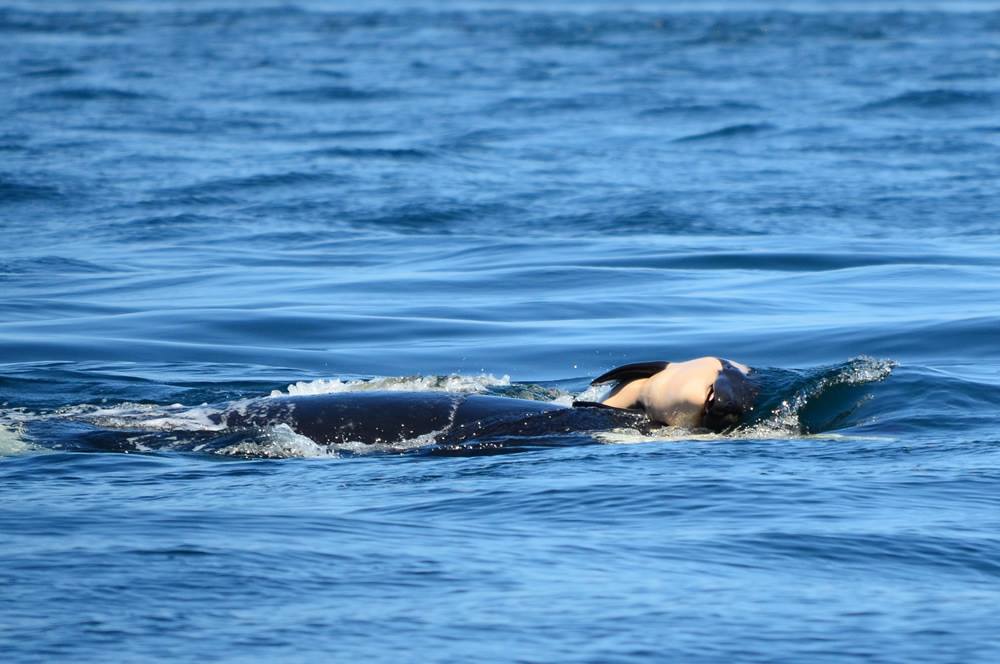For 17 days the killer whale known to scientists as J-35 has been carrying the carcass of her dead calf.

Now, concerns are growing about what sort of impact that may have. The whale was spotted on Wednesday afternoon with the J-pod of orcas.
“We have obvious concerns about the displacement of her behaviour away from foraging and feeding towards carrying her calf, and concerns over the length of time this behaviour continues,” said Department of Fisheries and Oceans (DFO) killer whale researcher Sheila Thornton.
The calf was born July 24, but died shortly afterward. The whale’s mother has been carrying it ever since its death.
Wednesday’s spotting was the first time the pair had been seen since last week.
This comes as scientists are focusing in on helping another orca in the pod, J-50. The sick three-and-a-half-year-old whale has lost significant weight and is feared to have an infection.

Government officials on both the United States and Canada sides of the border have approval to test the whale and the United States has approvals to feed the whale a fish that has been prepared with antibiotics in it.

Get daily National news
Crews are still waiting to conduct tests on the whales, and are being delayed by high winds and poor visibility due to fog.
“It is best if it is quite calm. We can operate in calm winds. The challenge is keeping track of the whales,” said Brad Hanson, a wildlife biologist with the National Oceanic and Atmospheric Association (NOAA).
“What we need to do is match the course and speed of the whales and then move very calmly in so we don’t disrupt them.”
Scientists are still not sure why the whale has lost so much weight and believe an infection could be one of the problems. One of the great concerns for the whale is that it is part of the endangered southern-resident group of orcas that have declined to a population of only 76.
The population of southern resident killer whales in the Salish Sea was recorded at 98 in 1995, according to the U.S. Environmental Protection Agency (EPA).
DFO is working with the U.S.-based NOAA to observe the whale and hopefully conduct tests.
“The very poor health condition of southern resident killer whale J-50 of the J-pod is extremely concerning to all of us and warrants immediate action,”reads a statement from DFO.
“J-50’s fragile state is particularly trying for Canadians, Americans and Indigenous peoples given the state of the whale population and the whales’ cultural significance.”
Scientists are also mindful that any interaction with the pod could have unintended consequences. In order to feed the sick whale the medicated fish, crews must get within five metres of the pod.
“As there are only approximately 76 southern resident killer whales left, we must take into consideration whether our actions risk harming either J-50 or her pod,” adds the DFO statement.
“We will be ready to respond quickly should the intervention need to occur in Canadian waters.”








Comments